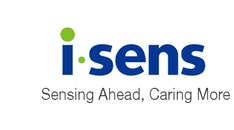
What Is the DASH Diet?
The DASH diet stands for “Dietary Approach to Stop Hypertension” – an eating plan endorsed by the American Heart Association that aims to reduce hypertension (ie, high blood pressure).1 The diet is characterized by a high intake of fruits, vegetables, whole grains, fat-free or low-fat dairy products, poultry, fish, nuts, beans, and seeds.2 On the other hand, the diet is low in sodium, sweets and sugars, saturated fat, trans fat, cholesterol, and red meats. This pattern of eating provides a rich source of protein, fiber, calcium, potassium, and magnesium which are associated with lowering blood pressure.
Does the DASH Diet Lower Blood Pressure?
Hypertension is known to be one of the leading causes of cardiovascular disease (CVD) and death.3,4 Modifiable risk factors such as unhealthy eating patterns consisting of high sodium intake, low potassium intake, high saturated and trans-fat intake, and high alcohol consumption and lack of physical activity are known to play a significant role in the development of hypertension and CVD.1,3,4
Various studies have demonstrated that the DASH diet can effectively improve blood pressure, blood lipid levels, as well as cardiac biomarkers.1,5,6 For instance, a 2020 systematic review and meta-analysis of randomized controlled trials found that the DASH diet significantly reduced both systolic and diastolic blood pressure in individuals with and without hypertension.7 The effects were greater in younger individuals and when the sodium intake was lower than 2400 mg/d. In addition, a secondary-analysis of the 2001 landmark study DASH-Sodium trial discovered that the DASH diet improved biomarkers that indicate cardiac injury and inflammation.1,8 The study found that the effects became significant over the course of 12 weeks of intervention and concluded that the benefits of the DASH diet would be heightened if adhered to for a longer period.
How Can I Get Started on a DASH Diet?
One of the key recommendations of the DASH diet is to reduce sodium intake as high sodium intake is associated with hypertension.2 The DASH diet generally recommends lowering daily sodium intake to 1,500 mg per day, but depending on individual caloric needs, an intake of up to 2,300 mg is allowed. Preparing foods with less salt, avoiding having saltshaker at the table, and using more herbs and spices instead of salt are some ways to lower sodium intake. When purchasing processed foods, aim for foods that have <5% of the daily value of sodium and especially avoid ones with >20% of sodium.
In addition, increasing consumption of vegetables and fruits is recommended. Add servings of vegetables and fruits to each meal until you can consume approximately 5 servings of each a day. Reduce consumption of lean meats to less than 6 ounces a day. Eating more vegetarian-style or meatless meals during the week can help reduce meat consumption. Gradually incorporating changes throughout days and weeks can help make healthy eating part of your daily routine.
|
References: |
(Disclaimer)
The content of this article is intended to provide a general information and knowledge on the subject matter. The views expressed in newsletters, articles, and blogs in the i-SENS USA website are not necessarily those of i-SENS Incorporated, i-SENS USA Incorporated or our publishers. Medical or nutritional information on i-SENS USA website is not intended to replace professional medical advice – you should always consult a specialist with any questions about your specific circumstances.





Add a comment